Figures & data
Table 1. Guessed vocoded target word identity. Vocoded words were played for seven listeners and listeners gave as many guesses as they wanted as to the identity of the word. Each row lists the guesses for one target word, with the number of individuals who gave that guess shown in parentheses
Table 2. Participants recalled sequences of verbally presented target words by clicking on the corresponding orthographic label. All participants recalled words from the acoustically distinct set and were assigned to one of two conditions for the acoustically similar set: the matched, phonologically overlapping orthographies or mismatched, phonologically distinct orthographies. Phonological distinctiveness of response labels is summarized as the mean phonological edit distance (PED) from each label to the other labels within its set
Figure 1. Serial recall task. Participants heard sequences of six vocoded words that were difficult to understand and then selected the corresponding trained word labels in the order in which they were heard. All participants were trained on the same set of labels for distinct words. Half of the participants were trained with labels that matched the vocoded word (matched label group) and half of the participants were trained with labels that were plausible but did not match the vocoded word (mismatched label group)
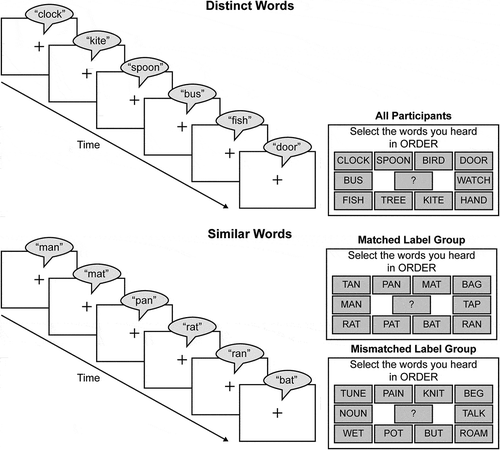
Figure 2. Recall accuracy across word sets. Each thin line represents the proportion of items recalled in the correct position by an individual in the conditions they completed. Thick lines show group averages across conditions
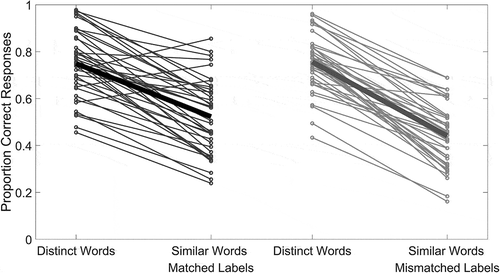
Figure 3. Number of trainings prior to passing the proficiency check for each word set. Participants are grouped by whether they were trained on the matched or mismatched labels for the similar words, although all participants were trained on the same labels for the distinct words
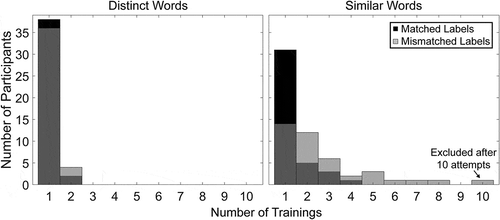
Figure 4. Response times in initial proficiency checks for each word and label. Each dot represents the response from one participant and horizontal lines show the geometric mean of response times across all participants for the corresponding word/label combination. Response times longer than 4.3 s are not shown to emphasize mean differences
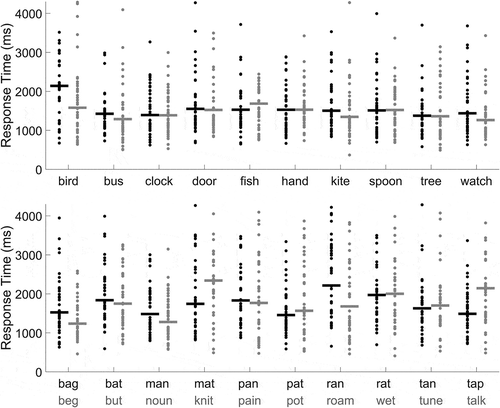
Figure 5. Comparison of word recall accuracy between the two groups, averaged across participants and list positions. Each point represents recall accuracy for one word across both groups. Response labels for each word are provided next to the corresponding point. The distinct words, shown in black, had the same response label across both groups, while the similar words, shown in gray, differed in the use of matched/mismatched labels across groups. Solid lines show model II Standard Major Axis Regression (Legendre, Citation2013) trends for each word set and the dashed line shows equality across groups
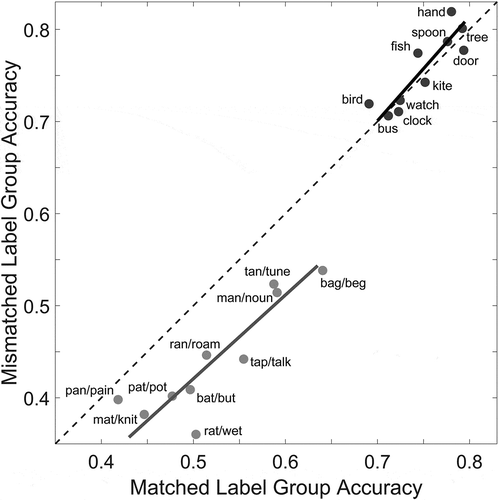
Figure 6. Recall accuracy across item positions for each word set. Participants are grouped based on which label condition they completed, as in Figure 2. Each point represents the proportion of correct responses for each serial position in each word set across participants. Significant differences across groups after Bonferroni correction for each position are indicated by asterisks
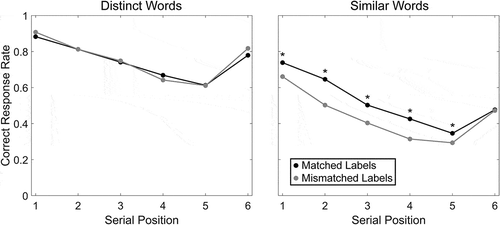
Data Availability Statement
All data and analyses are available at https://osf.io/qgfa2/.
